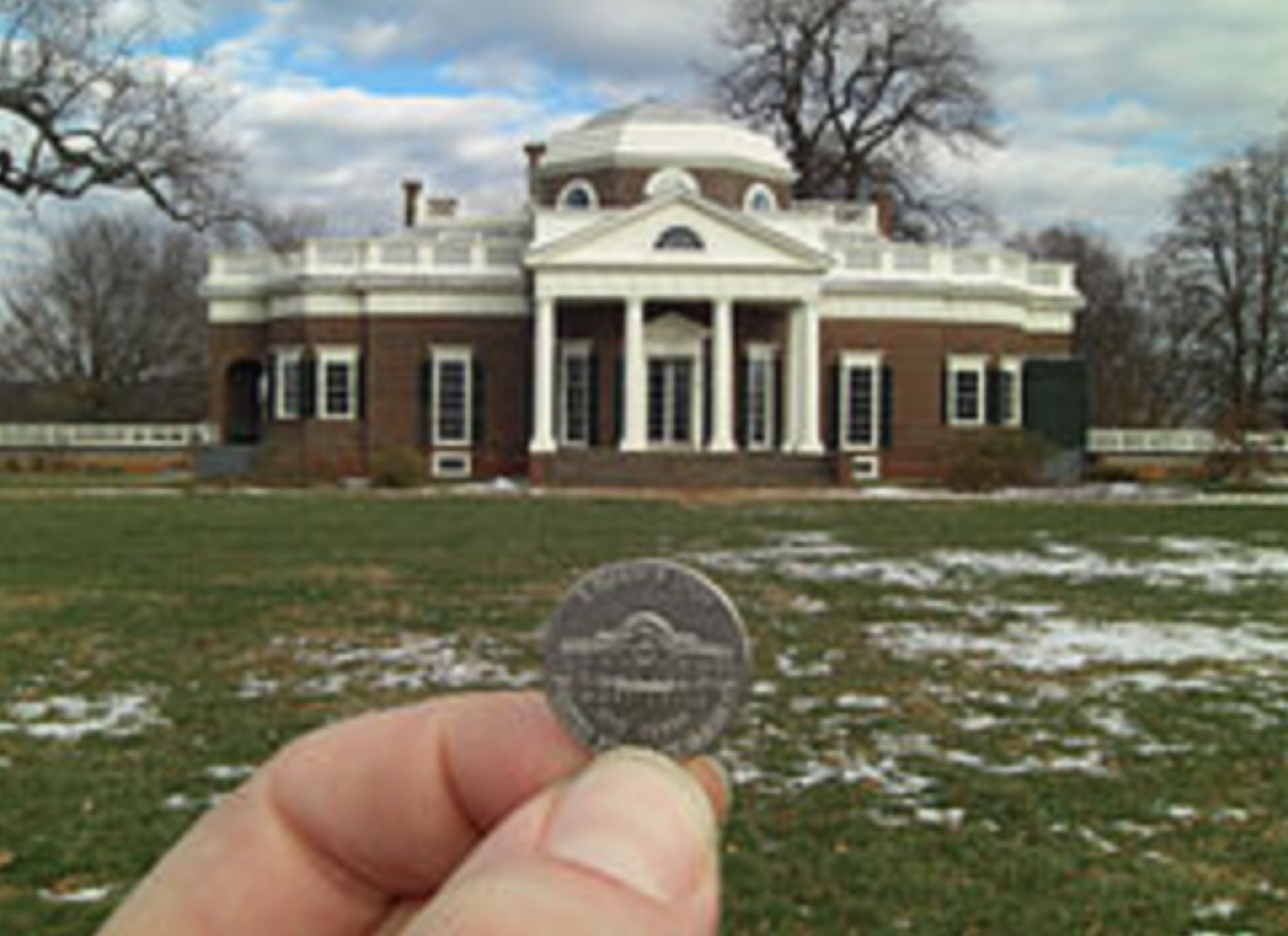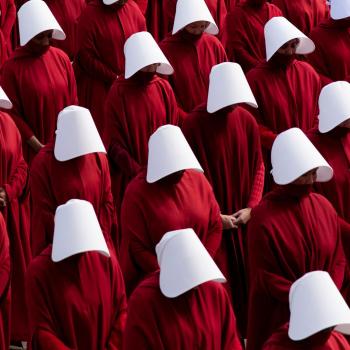All of us have flaws that we try to mask from others. Nobody wants to be an open book for the world to read. This is true of the best and the worst of us. This was no less true of Thomas Jefferson. His home, Monticello, gives us clues as to how he dealt with his inner demons. Monticello might also have something to teach us about ourselves as a nation.
Jefferson has been a lifelong fascination for me. I admire so much about him. His talent and intellect seemed almost boundless. Yet he, like all of us, was deeply flawed. He was a man with many inconsistencies and paradoxes. I wrote about some of those in this article last year. The most obvious inconsistency in Jefferson was his complex relationship with the “peculliar institution” of slavery. Jefferson, of course, wrote the Declaration of Independence and its most famous phrase, “we hold these truths to be self evident, that all men are created equal.” Even as he penned that phrase, several hundred slaves toiled in bondage at his plantation in Charlottesville, Virginia.
Jefferson made no secret of his distaste for slavery. Here are just a few examples of things he wrote about it over his lifetime…
- Slavery is a “moral depravity”
- Slavery is a “hideous blot”
- Slavery is “contrary to the laws of nature”
- Slavery is “the greatest threat to the survival” of the new nation
To Jefferson’s credit, those sentiments were decades ahead of the times in which he lived. Jefferson should be admired for holding such noble ideals when most southern planters of his time would have considered them blasphemous. Yet, he never acted upon his own convictions. Over his lifetime, Jefferson owned over 600 slaves and he only freed 7 of them (some of those 7 were almost certainly his own children with his slave, Sally Hemings).
I have always struggled with just what to do with this paradox. Part of me wants to hold Jefferson responsible as a hypocrite, but I know that history isn’t always that simple. We cannot fairly judge people of the past solely from the perspective of our modern day norms. So, how did Jefferson deal with it? How did he justify his own apparent hypocrisy? The simple answer is, so far as I have been able to discern, he mostly ignored it.
The more I have studied Jefferson the more clear it has become just how skilled he was at mentally compartmentalizing his life. He had an uncanny ability to brush aside unpleasant realities and live above them in his own hand-crafted reality. He did this with other troublesome areas of his life as well, such as debt. Jefferson was often in great personal debt, but never let that curtail his lavish spending. Monticello was filled with imported goods (books, especially) from Europe. This debt also played a huge role in the story of slavery at Monticello. Slaves, and the fruits of their labor, were the only things keeping Jefferson financially solvent. But that is the topic for another day.
The fact that Jefferson was aware of his own inconsistency where slavery was concerned was another thing he seemed to ignore publicly. But when you tour Monticello, you see that he had subtle ways of helping him cover his guilt from guests, at least. While it was no secret that Jefferson owned slaves, it was obviously something he didn’t want to advertise to guests visiting his home. Wherever possible, Jefferson kept his house slaves behind the scenes while his guests visited his idealized, hand-crafted “reality.”
After all, it’s no secret that we all have dirty laundry in our houses but, when guests are over, we don’t leave it lying around, do we?
Monticello is a wonderfully whimsical place to visit. It is full of little inventions and gadgetry that Jefferson developed and incorporated into his house. Some of those features were subtle ways to limit the visibility of slaves from the sight of the guests as they visited.
One example is the wine dumbwaiter built into the mantlepiece of the fireplace.
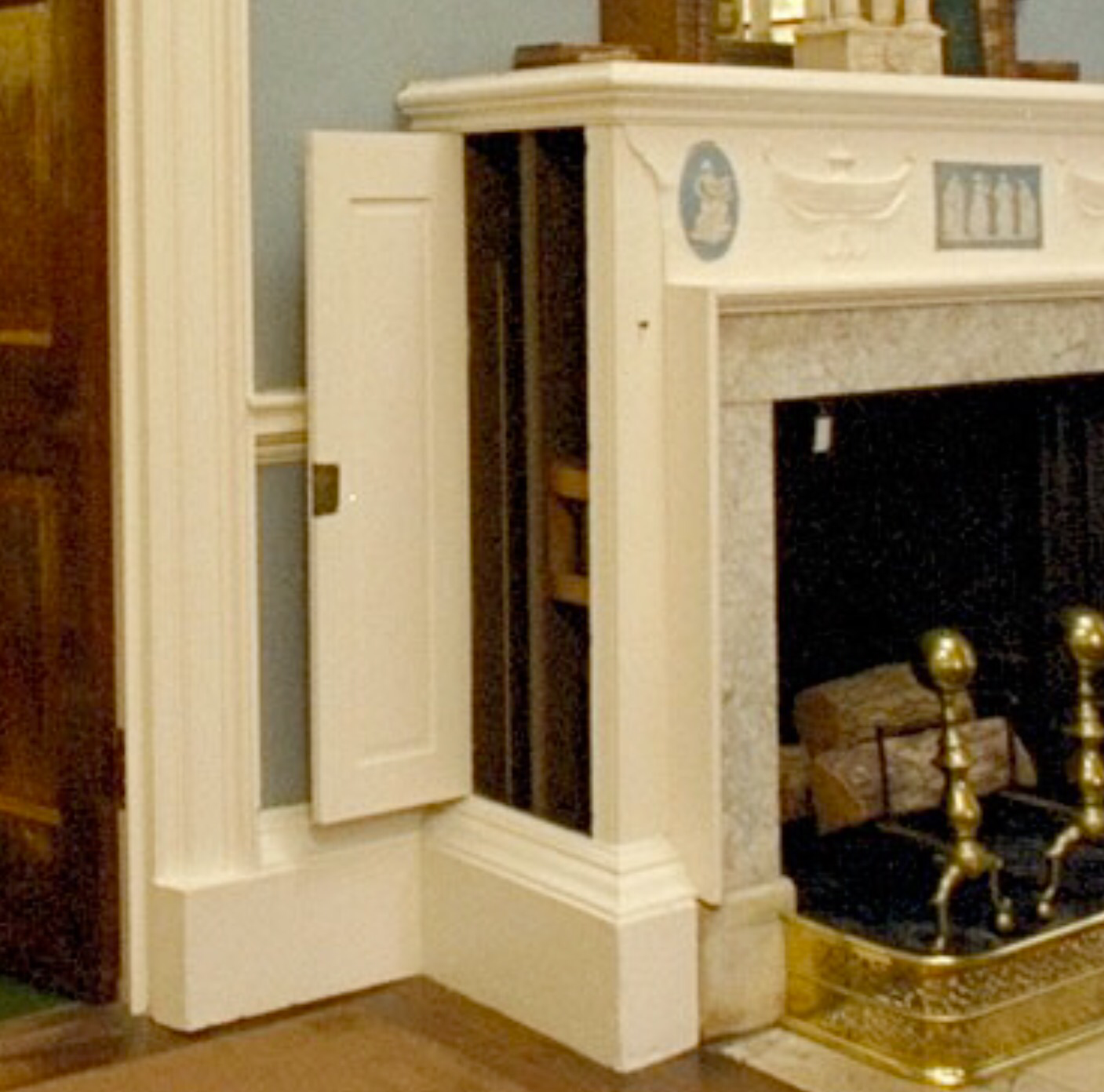
This contraption allowed slaves working in the wine cellar below to deliver bottles of wine upstairs for Jefferson and his guests without actually having to enter the room.
Another example is this revolving door with shelves.
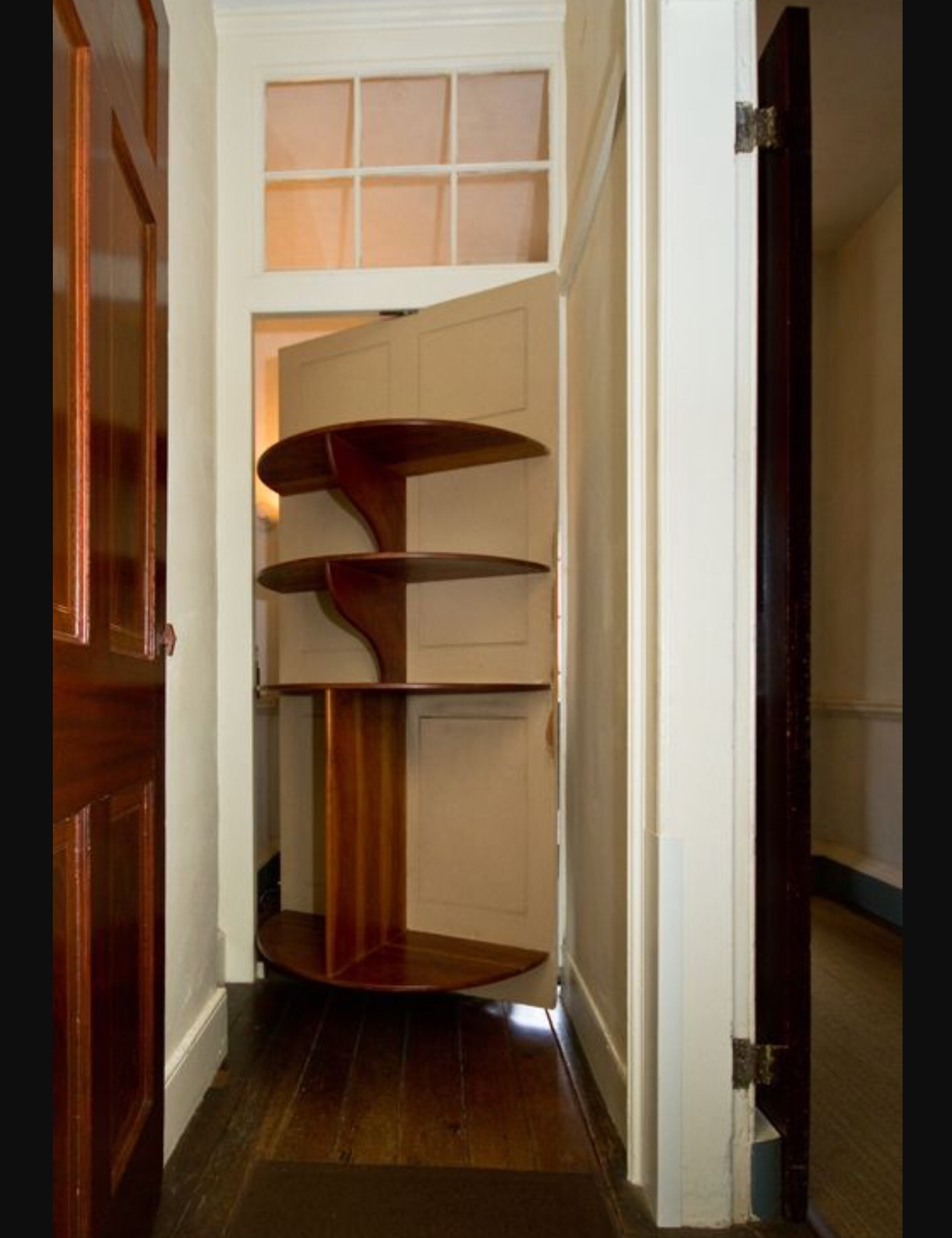
On one side of this door is a back hallway were slaves could bring food up from the kitchens below, place it on the shelves, and spin the door around where it would appear in the dining room. Again, a delivery was made without guests actually seeing the slaves who brought it. Are you beginning to get the picture of a man who was dealing with inner demons here?
Perhaps the most obvious example of this is the the largest. The picture at the top of this article shows Monticello from the front. This is the view guests would see as they approached the house. Notice that there is white fencing stretching out on both sides of the house. From the front, this seems just like a lovely landscaping effect. What guests don’t see from the front is what is under that landscape feature. Below there are long wings of slave quarters visible only from the back, as seen in the photo below.
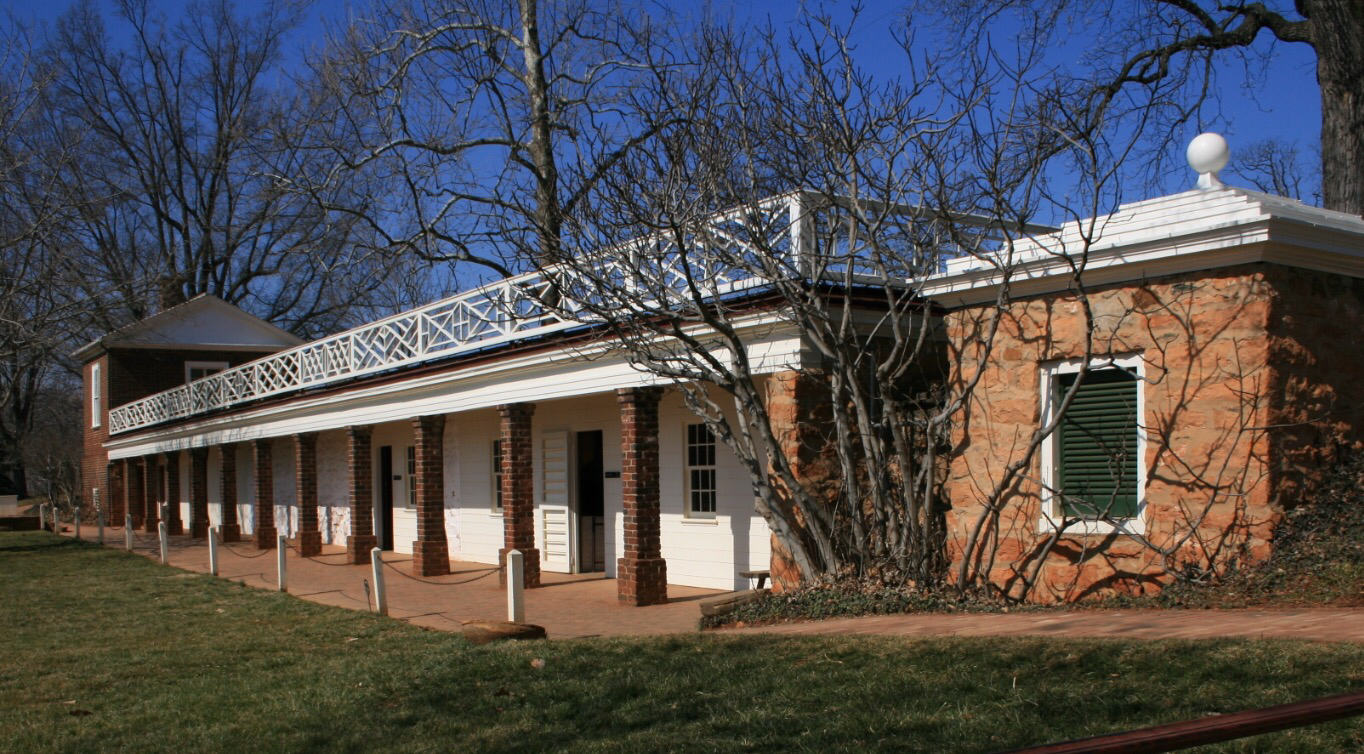
Those parts of the house only visible from the back are really the heart and soul of the home. That is where the house workers lived and where the work of the house got done. Yet, a visitor to the home could come and go and never even see this.
It seems to me that a trip to Monticello is a must for anyone who really wants to understand America. I sometimes see this marvelous home as a metaphor for the United States. We are a nation that is built on high ideals. We want to be great. We want others to see us as great. But we are also deeply flawed. Great as we are, we continue to deal with our demons. 

